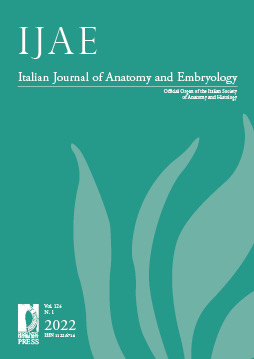History of Medicine as a bridge between Paleopathology and the Medical Humanities. New Technologies Applied to Bioarchaeology: reconstructing Lifestyles in Ancient Rome
Published 2022-09-20
Keywords
- multi-disciplinary investigation,
- history of medicine,
- bioarchaeology,
- lifestyles in Rome,
- Early Middle Age
How to Cite
Abstract
The research project Diseases, health and lifestyles in Rome: from the Empire to the Early Middle Age (PRIN 2015), covered a significant area of research, ranging from the historical and historico-medical content that emerged during the multi-disciplinary investigation on the subject, to the intersection between different methods and approaches and the full enhancement of truly primary sources that included human skeletal remains, food residues, housing situations and burial contexts. From this perspective, the interest in the so-called “material culture” has taken on a more important meaning than the simple response to a conceptual and ideological historiography. Since the 1980s, there has been a sort of limitation regarding a more objective reconstruction of Antiquity. In general, written and iconographic sources convey information that is more or less intentionally mediated by the cultural and anthropological coordinates that produced it, requiring the historian to make a philological exegesis effort that even in the case of manuscripts and epigraphs needs to dialogue with tools of support and writing. On the other hand, the importance of molecular data would be partial and misleading if it were to be based on a more traditional documentary framework. Therefore, the history of medicine, always accustomed to operating in an area dedicated to a mixing of different areas of expertise and study, has once again proved capable of creating a dialogue among areas of study that are seemingly distant from one another. However, these areas of study are complementary, leading to a reliable historical reconstruction. In fact, the choice to focus the investigation on the human body has also inevitably highlighted the οἶκος in which it finds itself. This is part of a dynamic natural and social system, as was perfectly clear to the legislators of the late-Republican period and to doctors of imperial age, including Galen, who were well aware of the connection among health, productive and manufacturing activities, urban planning, pollution and food. Therefore, the anthropological, paleo-pathological and molecular investigation on skeletal remains, in dialogue with the historical-medical, literary and iconographic sources, has become the opportunity for a historical reconstruction. This reconstruction is all the more interesting as it encompasses a time frame that contains the transition from the Late Antiquity to the beginning of the Middle Ages, allowing for the identification of a series of indicators on continuity and discontinuity.


